Photograph by Ing-On Vibulbhan-Watts
I went to Thailand to visit my family for two months, from July and August 2017. I did not visit home since 2006. I was glad to see my family. I enjoyed seeing all new development in Bangkok and loved eating authentic Thai food, especially Thai fruits.
I had a chance to visit my home town, Lopburi, where I was raised when I was young, before we moved to Bangkok. I traveled to Ayutthaya to see the ruins of temples that were burned by Burmese soldiers, when the Burmese wanted to take over Thailand, The Burmese–Siamese War (1765–1767). Ayutthaya was one of the former capitals of Thailand before moved to, Thonburi and then Bangkok. I also traveled to, Chiang Mai, located in the Northern part of Thailand. Chiang Mai is the second largest and second most popular city of Thailand.
John, my husband came to Thailand in August. He joined me traveling to different part of Thailand. I had a good time taking videos and photographs wherever I traveled around Bangkok and other part of Thailand. I hope the viewers of my website will enjoy the photographs that I present in these projects.
Ing-On Vibulbhan-Watts, Thursday, October 26, 2017
Thai Street Art, Wall Murals At Lat Phrao 5/1, Bangkok, Thailand
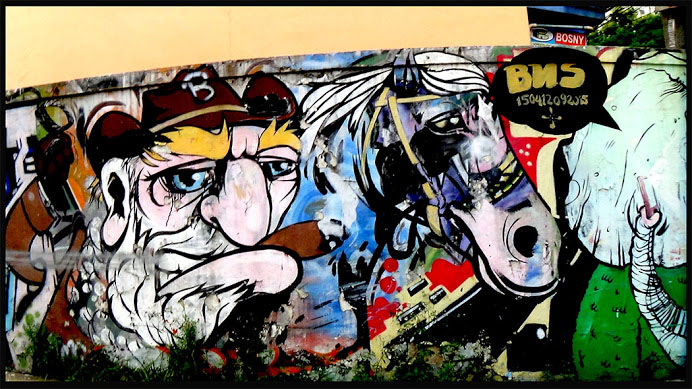 “Bangkok recently hosted their first Street Art Festival, inviting artists from around the world to join the best Thai talent to leave their colourful messages around town. Not everyone likes graffiti, but this is a popular art open to everyone and there is no doubt those artists are extremely talented. Unlike museums, street art is visible to everyone, everyday and are here to stay – as long as the old walls used as canvas are left standing. As construction claims more and more of Bangkok, this artwork will one day disappear, but for now it is here to enjoy. During our exploration of Bangkok, we have found several locations exhibiting these oversized painting. The best known set is next to Ratchatewi BTS Station, not far from MBK, and some other artworks are painted along the nearby canal. Another beautiful set is found at the Alliance Française on Sathorn Road.”
“Bangkok recently hosted their first Street Art Festival, inviting artists from around the world to join the best Thai talent to leave their colourful messages around town. Not everyone likes graffiti, but this is a popular art open to everyone and there is no doubt those artists are extremely talented. Unlike museums, street art is visible to everyone, everyday and are here to stay – as long as the old walls used as canvas are left standing. As construction claims more and more of Bangkok, this artwork will one day disappear, but for now it is here to enjoy. During our exploration of Bangkok, we have found several locations exhibiting these oversized painting. The best known set is next to Ratchatewi BTS Station, not far from MBK, and some other artworks are painted along the nearby canal. Another beautiful set is found at the Alliance Française on Sathorn Road.”
Above comments are from “Bangkok Street Art” website
Read more at: https://www.bangkok.com/magazine/street-art.htm?cid=ch:OTH:001
 Thai Street Art, Wall Murals At Lat Phrao 5/1, Bangkok, Thailand
Thai Street Art, Wall Murals At Lat Phrao 5/1, Bangkok, Thailand
“Bukruk Festival on Phaya Thai Road Bukruk Street Festival (Bukruk meaning ‘Invasion’) united 16 European and 11 Thai artists for a month of frenzy wall art in the very middle of Bangkok. The most striking pieces are painted on a series of abandoned buildings located on Phaya Thai Road, below Ratchatewi BTS station, just a hundred meters from the famous MBK shopping mall. Here again famous Thai artist Alex Face strikes back, with his ‘rabbit falling from the roof’ and a giant mutated fly by Yuree Kensaku, a hairy one eye monster by Pharuephon Mukdasanit, known as Mamafaka, next to a psychedelic dog by Thai artist P7. More murals can be seen along the nearby Saen Saeb canal, in Siam Square or on Rama 6 Road, past the famous Jim Thompson house. The whole thing is extraordinary and proves that Bangkok too contributes to the comtemporary art scene.”
Above comments are from “Bangkok Street Art” website
Read more at: https://www.bangkok.com/magazine/street-art.htm?cid=ch:OTH:001
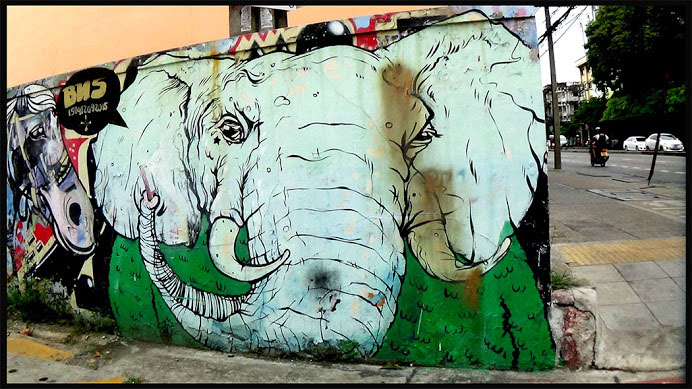 Thai Street Art, Wall Murals At Lat Phrao 5/1, Bangkok, Thailand
Thai Street Art, Wall Murals At Lat Phrao 5/1, Bangkok, Thailand
“Exhibition at Alliance Francaise on Sathorn The Street Art Exhibition of Thai artist Alex Face (Patcharapol Tangruen) and French Jace at Alliance Française on Sathorn Road is as discreet as it is unusual. The Alliance Française building has been on Sathorn for ages, since 1912 to be precise, but the Alliance Française (as well as the old French Embassy on the riverside) is due to move to a brand new building currently under construction near Lumpini park. All this explains why the exhibition is unusual and creative… an entire floor of the building has been emptied of all desks, filing cabinets and furniture, and every room has been offered to the two artists to express themselves. Indoor street art inside the abandoned floor of an official building with pieces of discarded desks left in dusty corners? It is beautiful and a bit eerie! Entry is free so you should rush to enjoy this before the Alliance Française moves to its new location and the building torn down. Opening Hours: Closed on Sunday Location: 29 Sathorn Road (next to Banyan Tree Hotel)”
Above comments are from “Bangkok Street Art” website
Read more at: https://www.bangkok.com/magazine/street-art.htm?cid=ch:OTH:001
“Thai Street Art By redmudstain / 26 September 2012 / Captured: Photos of the Land / 2 comments
Chiang Mai Graffiti
UPDATE – NOV. 2013: A friend and I have founded Chiangmai Graffiti, which showcases the work of CNX graffiti and street artists. Once fully launched, it’ll feature exclusive interviews with various up & coming artists, photos of art all around the city,y exhibits and events, and other collaborative works. You can go to our Chiang Mai Graffiti’s Facebook to check out the community so far.”
For more information please visit the following link:
https://redmudstain.wordpress.com/2012/09/26/thai-street-art/
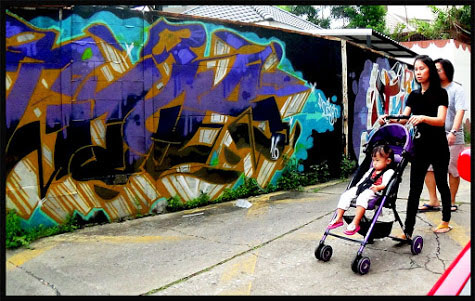
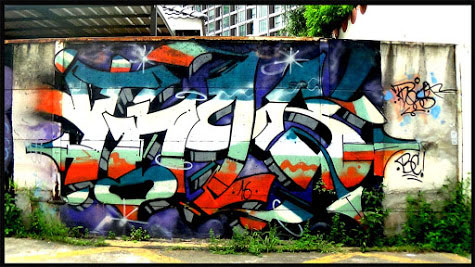
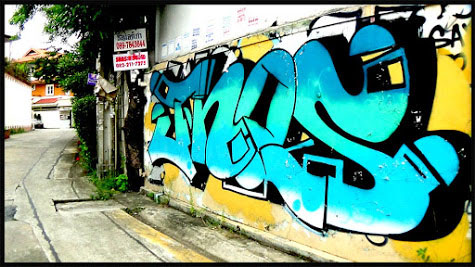
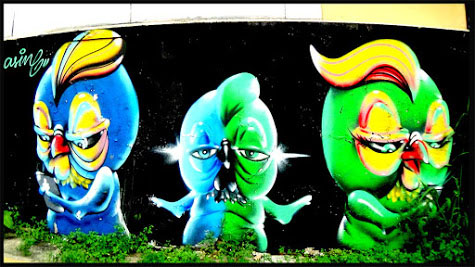
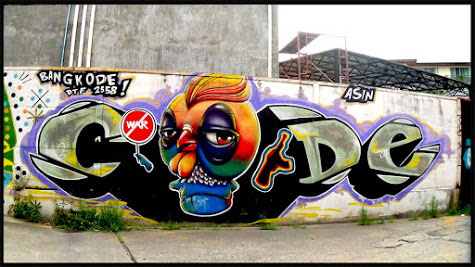
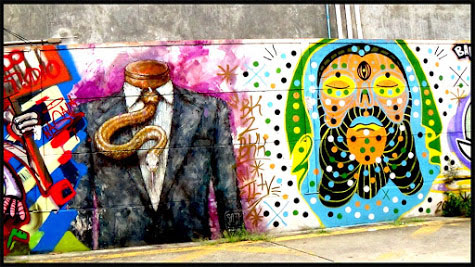

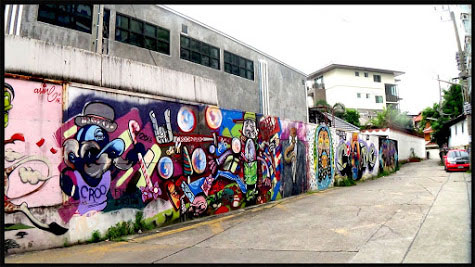
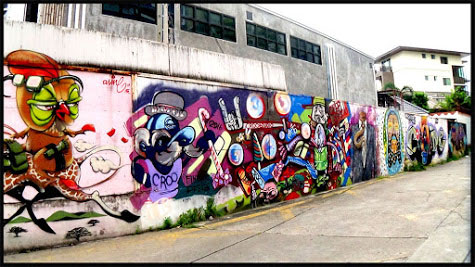
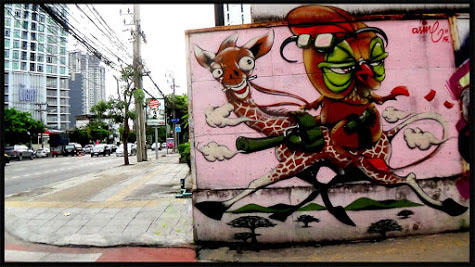
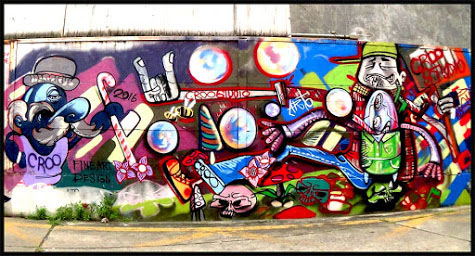
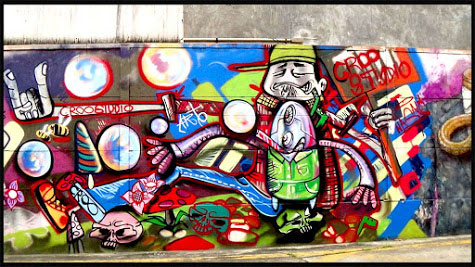 Street Art, Chiang Mai, Thailand
Street Art, Chiang Mai, Thailand
Welcome To My Beloved Country, Thailand
Photograph by Ing-On Vibulbhan-Watts
Discovering Chiang Mai’s Amazing Street Art
by Kian & Sri | May 1, 2016 | Chiang Mai
Have you seen enough temples in Chiang Mai? Don’t know what to do next? Then take your camera for an afternoon and start exploring Chiang Mai’s stunning street art! Here are the best spots:
Arak Road, Rachadamnoen Road.
For more information please visit the following link:
https://www.how2travelsmart.com/discovering-chiang-mais-amazing-street-art/
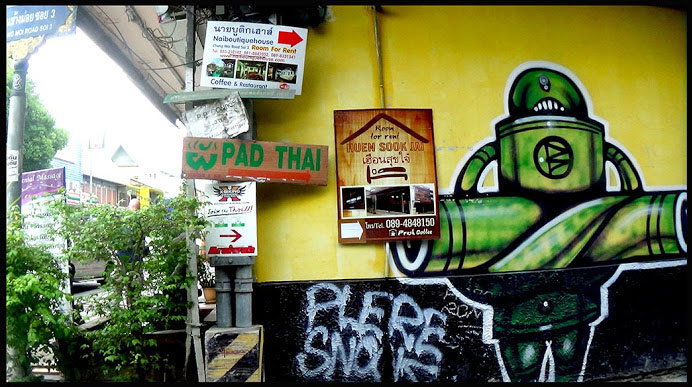 Street Art, Chiang Mai, Thailand
Street Art, Chiang Mai, Thailand
Welcome To My Beloved Country, Thailand
Photograph by Ing-On Vibulbhan-Watts
Discovering Chiang Mai’s Amazing Street Art
by Kian & Sri | May 1, 2016 | Chiang Mai
Chiang Mai becomes more and more a place where creative people from all over the world meet to exchange ideas and get inspired. Just last April, Chiang Mai was the proud host of the international acclaimed ‘Meeting of Styles’ graffiti festival that welcomed some of the world’s top graffiti artists.
For more information please visit the following link:
https://www.how2travelsmart.com/discovering-chiang-mais-amazing-street-art/
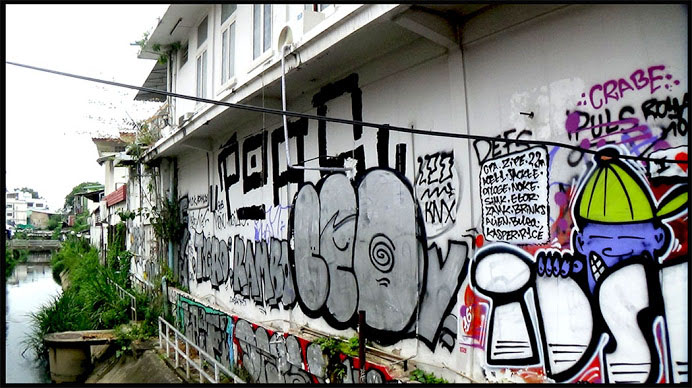 Street Art, Chiang Mai, Thailand
Street Art, Chiang Mai, Thailand
Discovering Chiang Mai’s Amazing Street Art
by Kian & Sri | May 1, 2016 | Chiang Mai
Walking along the many alleys and backstreets in Chiang Mai is like walking the aisle of an art museum in Berlin or Hong Kong where collections of stunning murals are exhibited. Most artworks can be found on walls and construction sites in the Old Town while a few others are depicted on walls at parking lots in Nimmanhaemin.
Even the walls along the river side of the U.S. Consulate are decorated with phenomenal illustrations that were created by local schools to showcase the 180-year anniversary of relations between the United States and the Kingdom of Thailand.
For more information please visit the following link:
https://www.how2travelsmart.com/discovering-chiang-mais-amazing-street-art/
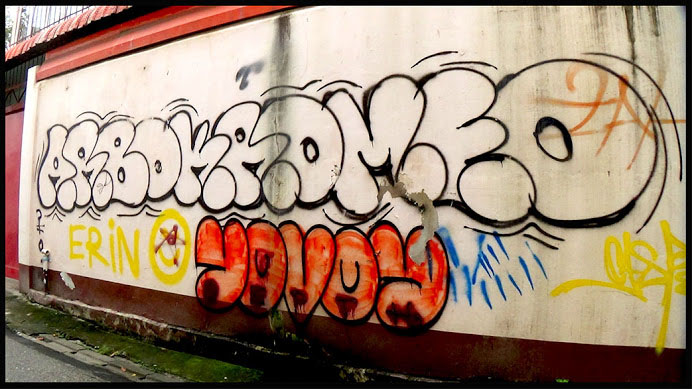 Street Art, Chiang Mai, Thailand
Street Art, Chiang Mai, Thailand
Discovering Chiang Mai’s Amazing Street Art
by Kian & Sri | May 1, 2016 | Chiang Mai
Chiang Mai becomes more and more a place where creative people from all over the world meet to exchange ideas and get inspired. Just last April, Chiang Mai was the proud host of the international acclaimed ‘Meeting of Styles’ graffiti festival that welcomed some of the world’s top graffiti artists.
For more information please visit the following link:
https://www.how2travelsmart.com/discovering-chiang-mais-amazing-street-art/
Umbrella Making Center, Bo Sang, Chiang Mai
Welcome To My Beloved Country, Thailand
Photograph by Ing-On Vibulbhan-Watts
What about the term “Parasol”?
The English term “parasol” is an adaptation of the French term “parasol”, Italian “parasole”. It combines old Greek/Latin “para” for “beside, near, contrary to, against” with the Latin/Indo-European term “sol”. In all languages, including English, the parasol is an unequivocal “sun protector”.
English use of the word “parasol” varies. It may be influenced by the origin or flavor of English that is used – Australian, European or US tinted. For example until about 10 years ago, the term “parasol” was not used very much in the US.
Some ambiguity exists between the English terms “umbrella” and “parasol”: the umbrella has its roots in providing shade and later added rain protection – while generally the rain function is arguably the first that people associate with it. The “parasol” protects from the sun only, and has generally been a lesser used word.
For more information please visit the following link:
https://www.chiangmaiumbrellas.com/about/oiled-umbrellas
Umbrella Making Centre
Handmade umbrella in Bor Sang village was carried on for centuries, all local craftsman never attend …
DIY, design your own umbrellas. NOK AIR’s activity.
Hand-paint umbrellas, made to order.
The umbrella factory was established in 1978…
Address: Umbrella Making Centre 111/2 Moo 3
Bor Sang Village T.Tonpao Sankamphaeng
Chiang Mai 50131
Phone: 053-338195, 053-338324
Fax: 053-338928
Email: romborsang@yahoo.com
For more information please visit the following link:
https://www.tripadvisor.com/Attraction_Review-g293917-d545081-Reviews-Sa_Paper_Umbrella_Handicraft_Center-Chiang_Mai.html
Umbrella Making Center, Bo Sang, Chiang Mai
What is a “Parapluie”?
Unfortunately it is not an English word. In French, with closely related terms in Dutch, Swedish and Norwegian, the “parapluie” is exclusively a rain protector, the direct opposite of the “parasol”. It is based on the Latin word “pluvia” for rain. No ambiguities here.
For more information please visit the following link:
https://www.chiangmaiumbrellas.com/about/oiled-umbrellas
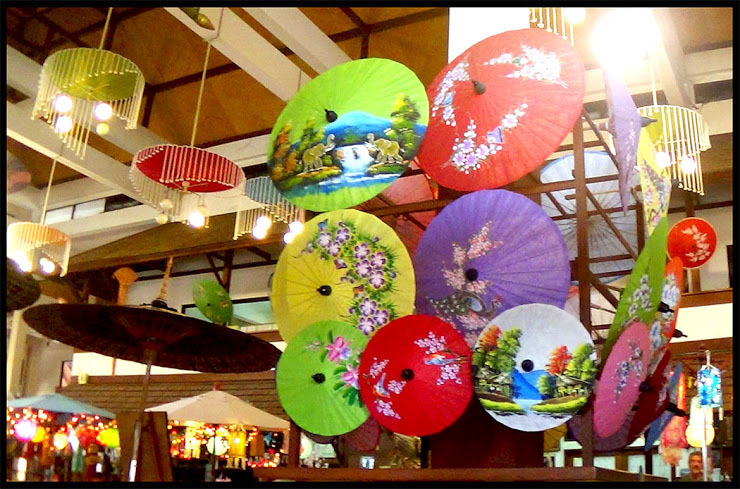
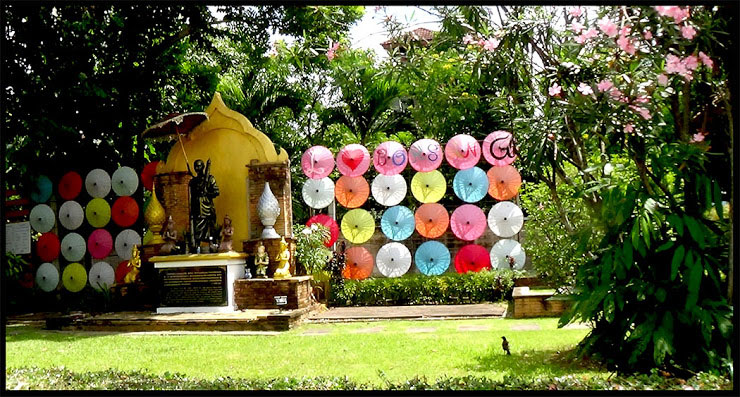 Umbrella Making Center, Bo Sang, Chiang Mai
Umbrella Making Center, Bo Sang, Chiang Mai
Ancient UmbrellasThe umbrella has a history reaching back to the ancient civilizations of Assyria and Nineveh, the Aztecs, Burma, China, Egypt, Greece, India, Rome, Siam and probably Atlantis. Early depictions with umbrellas as far back as 5,000 years are usually of high ranked dignitaries, emperors, kings, religious leaders. It is apparently less known if, or in how far normal citizens used umbrellas: it simply may not have been recorded in the inner sanctums of the elite pyramids and temples (1). It is beyond doubt, however, that dignitaries who used umbrellas did so for both practical and ceremonial purposes, with shapes and decorations marking status and rank. Another interesting point is that apparently all early documentation and depictions show umbrellas in use for sunshade, not for rain protection. This, in fact refers to early umbrellas as parasols (2).
The ancient depictions and English word roots lead some authors to assume that umbrellas or parasols in early history were exclusively used for sunshade and not for rain protection. This may or may not have been the case. One simple example may be a Chinese legend where animal skin is wrapped over a makeshift frame to serve as rain protection (3).
With the use of umbrellas in so many different early civilizations, the umbrella, rain or shine, is likely to have been invented and re-invented in many different places at different times.
For more information please visit the following link:
https://www.chiangmaiumbrellas.com/about/oiled-umbrellas 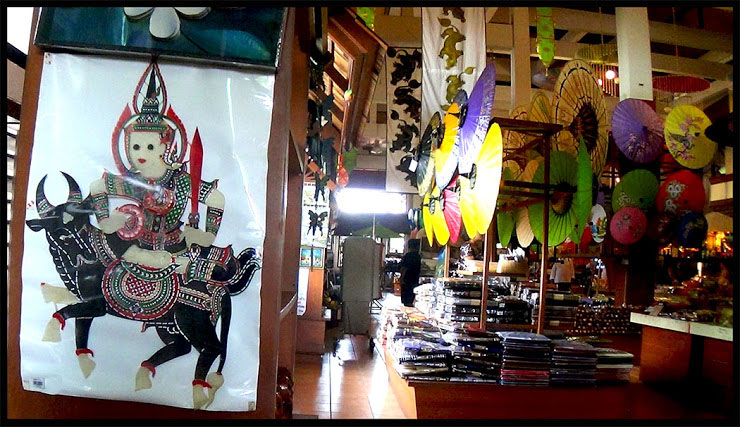
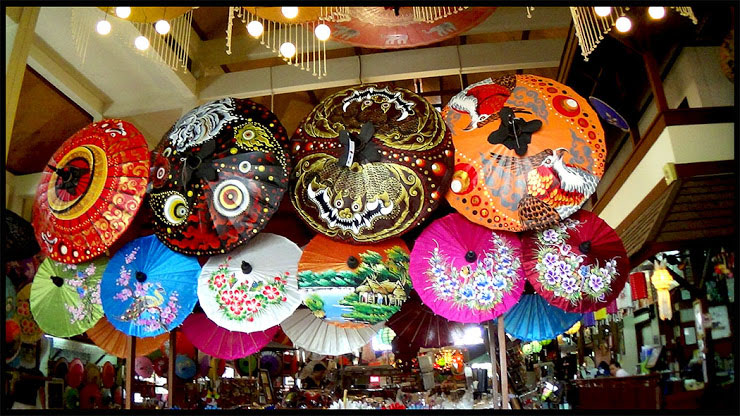
 Umbrella Making Center, Bo Sang, Chiang Mai
Umbrella Making Center, Bo Sang, Chiang Mai
Oiled Umbrellas – Made in Chiang Mai
By Jan Willem Roeloffs for Sunisa Umbrella Workshop, updated 12 November 2013.
Umbrellas are one of Chiang Mai’s most important traditionally produced, creative, handmade items. Foremost of these is the Thai oiled umbrella, exclusively produced in > Chiang Mai, northern Thailand.
For more information please visit the following link:
https://www.chiangmaiumbrellas.com/about/oiled-umbrellas
 Thai Traditional Massage
Thai Traditional Massage
Welcome To My Beloved Country, Thailand
Photograph by Ing-On Vibulbhan-Watts
Mechanism of action
All types of massage, including Thai massage, can help people relax, relieve aching muscles, and temporarily boost a person’s mood. However, many therapists make claims that go far beyond what massage can accomplish. It does increase circulation, gives temporary relief of pain, provides a sense of well-being, and promotes relaxation, but there is little evidence of further benefits.[8][better source needed]
For more information please visit the following link:
https://en.wikipedia.org/wiki/Thai_massage
Thai Traditional Massage
Training
A traditional massage practitioner is required to complete at least 800 hours training.[2]
Wat Pho, the center of Thai medicine and massage for centuries, opened the Wat Pho Thai Traditional Medical and Massage School in 1955 on the temple grounds, the first such school approved by the Thai Ministry of Education. Wat Pho offers four basic courses of Thai medicine: Thai massage, Thai midwife-nurse, Thai pharmacy, and Thai medical practice.[7]
For more information please visit the following link:
https://en.wikipedia.org/wiki/Thai_massage
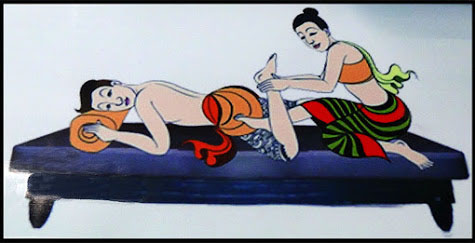 Thai Traditional Massage
Thai Traditional Massage
In fact, the history of Thai massage is more complex than this legend of a single founder would suggest. Thai massage, like Thai traditional medicine (TTM) more generally, is a combination of influences from Indian, Chinese, Southeast Asian cultural spheres, and traditions of medicine, and the art as it is practiced today is likely to be the product of a 19th-century synthesis of various healing traditions from all over the kingdom.[6] Even today, there is considerable variation from region to region across Thailand, and no single routine or theoretical framework that is universally accepted among healers.
For more information please visit the following link:
https://en.wikipedia.org/wiki/Thai_massage
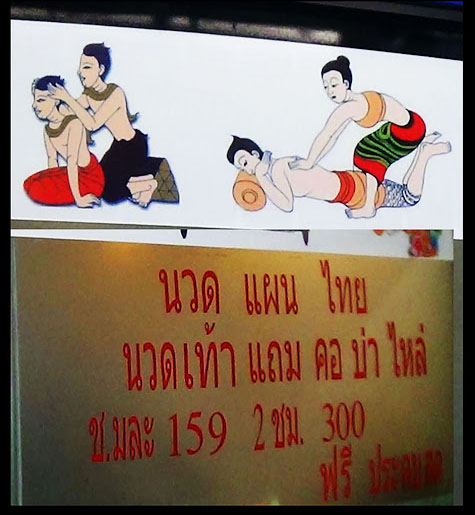 Thai Traditional Massage
Thai Traditional Massage
History
The founder of Thai massage and medicine is said to have been Shivago Komarpaj vaka Komarabh cca, who is said in the P?li Buddhist canon to have been the Buddha’s physician over 2,500 years ago. He is noted in ancient documents for his extraordinary medical skills, his knowledge of herbal medicine, and for having treated important people of his day, including the Buddha himself.[5]
For more information please visit the following link:
https://en.wikipedia.org/wiki/Thai_massage
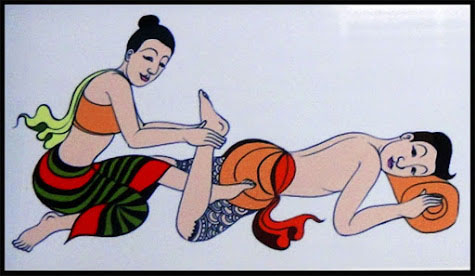 Thai Traditional Massage Illustration
Thai Traditional Massage Illustration
Welcome To My Beloved Country, Thailand
Photograph by Ing-On Vibulbhan-Watts
“Thai massage” or “Thai yoga massage” is an ancient healing system combining acupressure, Indian Ayurvedic principles, and assisted yoga postures.
In the Thai language it is usually called nuat phaen thai (Thai: lit. “Thai-style massage”) or nuat phaen boran (Thai: ugfgo, IPA: [nû?t p????n bo?ra?n]; lit. “ancient-style massage”), though its formal name is nuat thai (Thai: lit. Thai massage) according to the Traditional Thai Medical Professions Act, BE 2556 (2013).[1]
The Ministry of Health’s Department for Development of Thai Traditional and Alternative Medicine regulates Thai traditional massage venues and practitioners. As of 2016 the department says 913 traditional clinics have registered nationwide.[2]
For more information please visit the following link:
https://en.wikipedia.org/wiki/Thai_massage
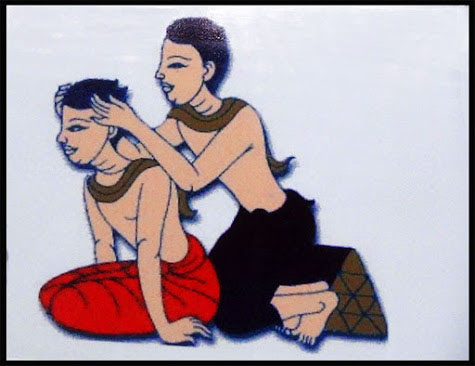 Thai Traditional Massage
Thai Traditional Massage
Traditional Thai massage uses no oils or lotions. The recipient remains clothed during a treatment. There is constant body contact between the giver and receiver, but rather than rubbing on muscles, the body is compressed, pulled, stretched and rocked.[3]
For more information please visit the following link:
https://en.wikipedia.org/wiki/Thai_massage
 Thai Traditional Massage
Thai Traditional Massage
The recipient wears loose, comfortable clothing and lies on a mat or firm mattress on the floor. In Thailand, a dozen or so subjects may be receiving massage simultaneously in one large room. The true ancient style of the massage requires that the massage be performed solo with just the giver and receiver. The receiver will be positioned in a variety of yoga-like positions during the course of the massage, that is also combined with deep static and rhythmic pressures.
For more information please visit the following link:
https://en.wikipedia.org/wiki/Thai_massage
 Thai Traditional Massage
Thai Traditional Massage
Welcome To My Beloved Country, Thailand
Photograph by Ing-On Vibulbhan-Watts
The massage generally follows designated lines (“sen”) in the body. The legs and feet of the giver can be used to position the body or limbs of the recipient. In other positions, hands fix the body, while the feet do the massaging. A full Thai massage session may last two hours and includes rhythmic pressing and stretching of the entire body. This may include pulling fingers, toes, ears, cracking knuckles, walking on the recipient’s back, and moving the recipient’s body into many different positions. There is a standard procedure and rhythm to the massage, which the giver will adjust to fit the receiver.[4][better source needed]
For more information please visit the following link:
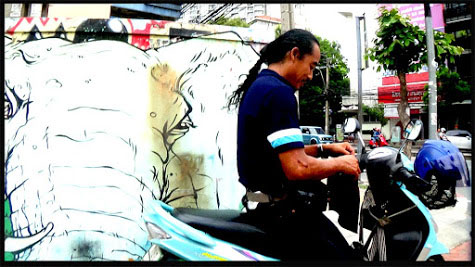


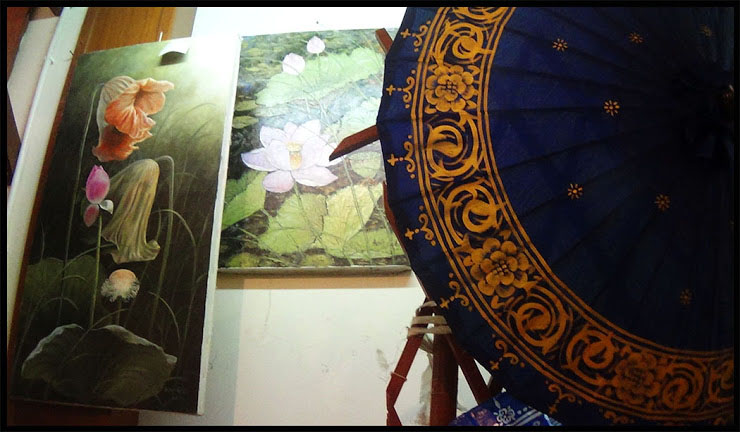
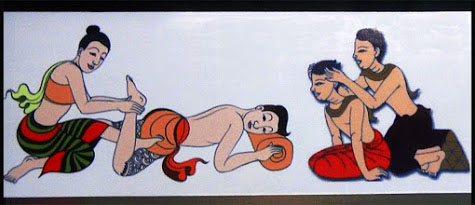
Leave a Reply